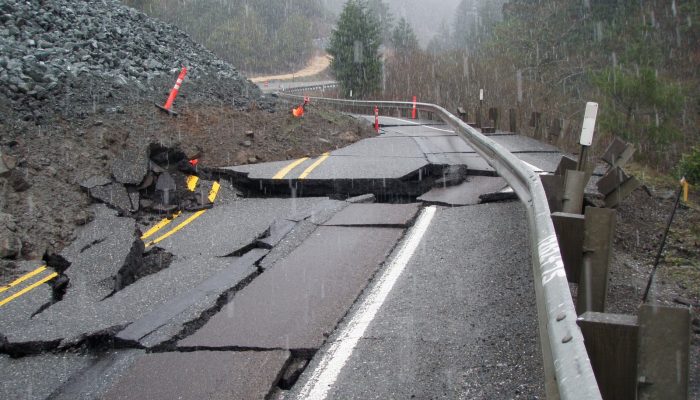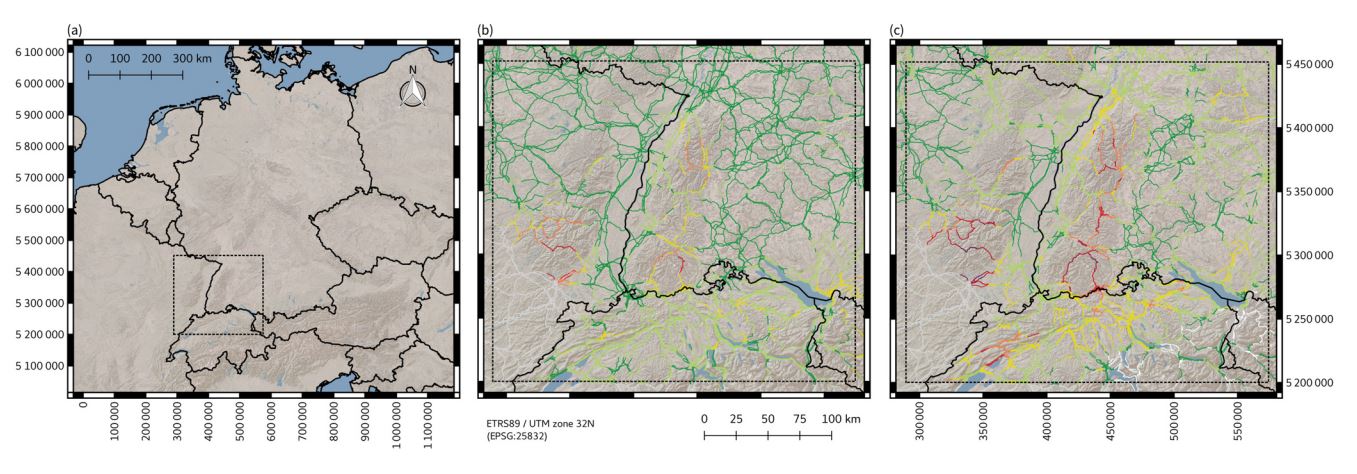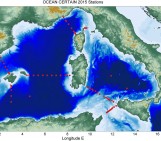
If your morning commute is already frustrating, get ready to buckle up. Our climate is changing, and that may increasingly affect some of central Europe’s major roads and railways, according to new research published in the EGU’s open access journal Natural Hazards and Earth System Sciences. The study found that, in the face of climate change, landslide-inducing rainfall events will increase in frequency over the century, putting central Europe’s transport infrastructure more at risk.
How do landslides affect us?
Landslides that block off transportation corridors present many direct and indirect issues. Not only can these disruptions cause injuries and heavy delays, but in broader terms, they can negatively affect a region’s economic wellbeing.
One study for instance, published in Procedia Engineering in 2016, examined the economic impact of four landslides on Scotland’s road network and estimated that the direct cost of the hazards was between £400,000 and £1,700,000. Furthermore the study concluded that the consequential cost of the landslides was around £180,000 to £1,400,000.
Such landslides can have a societal impact on European communities as well, as disruptions to road and railway networks can impact access to daily goods, community services, and healthcare, the authors of the EGU study explain.
Modelling climate risk
To analyse climate patterns and how they might affect hazard risk in central Europe, the researchers first ran a set of global climate models, simulations that predict how the climate system will respond to different greenhouse gas emission scenarios. Specifically, the scientists ran climate projections based on the Intergovernmental Panel on Climate Change’s A1B socio-economic pathway, a scenario defined by rapid economic growth, technological advances, reduced cultural and economic inequality, a population peak by 2050, and a balanced reliance on different energy sources.
They then determined how often the conditions in their climate projections would trigger landslide events specifically in central Europe using a climate index that estimates landslide potential from the duration and intensity of rainfall events. The index, established by Fausto Guzzetti of National Research Council of Italy and his colleagues, suggests that landslide activity most likely occurs when a rainfall event satisfies the following three conditions: the event lasts more than three days, total downpour is more than 37.3 mm and at least one day of the rainfall period experiences more than 25.6 mm.
The researchers also incorporated into their models data on central Europe’s road infrastructure as well as the region’s geology, including topography, sensitivity to erosion, soil properties and land cover.

Overview of a particularly risk-prone region along the lowlands of Alsace and the Black Forest mountain range: (a) location of the region in central Europe and median of the increase in landslide-triggering climate events for (b) the near future and (c) the remote future.
The fate of Europe’s roadways
The results of the researchers’ models suggest that the number of landslide-triggering rainfall events will increase from now up until 2100. Their simulations also find while that these hazardous rainfall events slightly increase in frequency between 2021 and 2050, the number of these occurrences will be more significant between 2050 and 2100.
While the flat, low-altitude areas of central Europe will only experience minor increases in landslide-inducing rainfall activity, regions with high elevation, like uplands and Alpine forests, are most at risk, their findings suggest.
The study found that many locations along the north side of the Alps in France, Germany, Austria and the Czech Republic may face up to seven additional landslide-triggering rainfall events as our climate changes. This includes the Vosges, the Black Forest, the Swabian Jura, the Bergisches Land, the Jura Mountains, the Northern Limestone Alps foothills, the Bohemian Forest, and the Austrian and Bavarian Alpine forestlands.
The researchers go on to explain that much of the Trans-European Transport Networks’ main corridors will be more exposed to landslide-inducing rainfall activity, especially the Rhine-Danube, the Scandinavian-Mediterranean, the Rhine-Alpine, the North Sea-Mediterranean, and the North Sea-Baltic corridors.
The scientists involved with the study hope that their findings will help European policy makers make informed plans and strategies when developing and maintaining the continents’ infrastructure.




